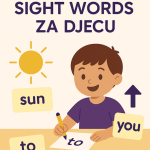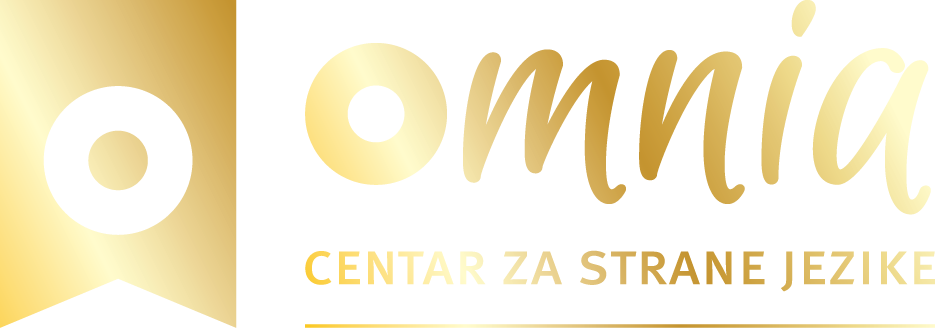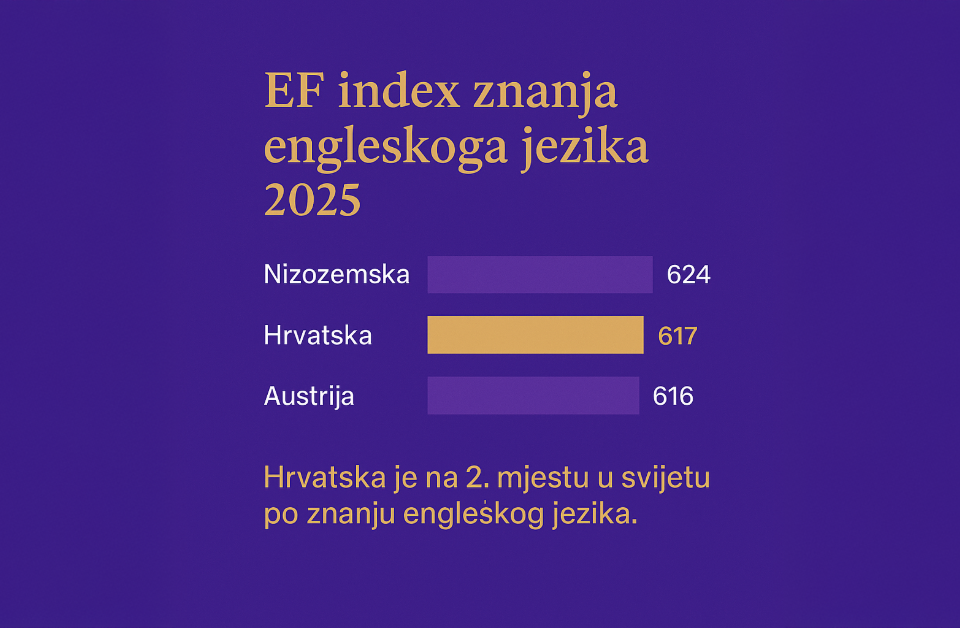
Što su Sight Words i zašto su važne za djecu koja uče engleski jezik? (+radni list za download)
17. svibnja 2025.
10 engleskih riječi koje Hrvati krivo izgovaraju (i kako ih pravilno reći)
22. svibnja 2025.Starting to learn Croatian can feel overwhelming, especially when it comes to building your first sentences.
The good news? Croatian sentence structure is much more regular than in English. Once you learn the basic patterns for affirmative sentences, negations, and questions, you’ll be able to communicate clearly and confidently.
In this beginner’s guide, we’ll show you how to form simple sentences in Croatian, with practical examples and easy-to-follow tables.
1. Forming Affirmative Sentences in Croatian
Affirmative (positive) sentences in Croatian are usually structured like this:
Subject + Verb + (Optional Object)
Examples:
| English | Croatian |
|---|---|
| I am a student. | Ja sam student. |
| She lives in Zagreb. | Ona živi u Zagrebu. |
| We speak Croatian. | Mi govorimo hrvatski. |
Important:
In Croatian, the subject (like ja, on, ona, mi) is often omitted because the verb ending shows who is performing the action.
✅ Example:
- Govoriš hrvatski. = (You) speak Croatian.
2. Forming Negative Sentences in Croatian
Negations are very simple in Croatian.
You add the word “ne” in front of the verb.
Structure:
Subject + “ne” + Verb + (Optional Object)
Examples:
| English | Croatian |
|---|---|
| I am not a student. | Ja nisam student. |
| She does not live in Zagreb. | Ona ne živi u Zagrebu. |
| We do not speak Croatian. | Mi ne govorimo hrvatski. |
✅ Notes:
- The negative form of sam (I am) is nisam (I am not).
- For most verbs, simply place “ne” in front:
- govorim → ne govorim
- živi → ne živi
3. Forming Questions in Croatian
Questions are also straightforward.
There are two main ways to form questions:
a) Changing your intonation
You raise your intonation at the end of a regular affirmative sentence.
Example:
| Affirmative Sentence | Question (intonation) |
|---|---|
| Ti si student. (You are a student.) | Ti si student? (Are you a student?) |
✅ No need to change word order — just your tone!
b) Using the particle “li”
For a more formal question (especially in written Croatian or polite conversation), you insert “li” after the verb.
Structure:
Verb + “li” + Subject + (Optional Object)
Examples:
| English | Croatian |
|---|---|
| Are you a student? | Jesi li student? |
| Does she live in Zagreb? | Živi li ona u Zagrebu? |
| Do we speak Croatian? | Govorimo li hrvatski? |
✅ Notes:
- You often start with the verb (jesi, živi, govorimo) followed by “li”.
Summary Table
| Type of Sentence | Croatian Example | English Translation |
|---|---|---|
| Affirmative | Ja govorim engleski. | I speak English. |
| Negative | Ja ne govorim engleski. | I do not speak English. |
| Question (intonation) | Govoriš engleski? | Do you speak English? |
| Question (“li”) | Govoriš li engleski? | Do you speak English? |
Tips for Building Sentences in Croatian
✔️ Start with simple sentences. Don’t try to translate complex English ideas immediately.
✔️ Practice forming one affirmative, one negative, and one question with every new verb you learn.
✔️ Speak aloud — Croatian pronunciation follows spelling, so saying sentences out loud will help you memorize the structure naturally.
Building basic sentences in Croatian — affirmative, negative, and questions — is easier than you think once you understand the simple patterns.
With regular practice, you’ll be able to hold basic conversations and start expressing yourself confidently.
Ready to build your Croatian skills one step at a time?
➡️ Join our Beginner Croatian Course (A1.1) — enrollment is open now, and classes are starting soon!




